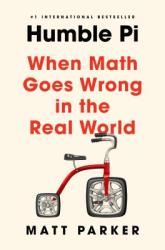
Growing up, I was never the type of kid who complained to my math teacher with the common saying, "When am I going to use this in real life?" Instead, I was always trying to find the weird and fantastical things that made math interesting. Unfortunately, many people get to adulthood and work on important engineering projects having probably asked that "real life" question at some point in their past. Humble Pi is a collection of many such stories of when math goes wrong in real life.
I can appreciate how Parker formatted this book to poke fun at some of the common math errors that have led to real-world situations. Things like the page numbers counting backward, the chapter numbers being poorly rounded, or that there are 314 pages in a book with "Pi" in the title are not lost on me. I had heard of many of these amusing anecdotes about math, but learned plenty of new ones that gave me a good chuckle as simple oversights nearly led to disasters.
My only qualm with Humble Pi is the tonal whiplash of the stories. It's hard to keep laughing about mathematical foibles when every third story is how an error led to the deaths of hundreds of people. These stark reminders of the importance of checking and double checking our calculations were quite sobering. But when the very next story is making light of a fairly innocuous mistake in a jocular manner, it feels a little disrespectful of the people who lost their lives in the previous story (or the next one). Either way, this is an important book to read if you've ever wondered what "real life" math can (and can't) do.
Some amusing and sobering examples of "real life" mathematics, I give Humble Pi 4.0 stars out of 5.
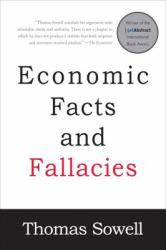
The political realm is filled with conflicting messages about how economics affects the American people, and what can be done to refine American economics. Thomas Sowell eloquently presents facts and logic about the most common fallacies used by politicians. He covers topics such as the gender wage gap, and the housing market, and that titles of bills or movements are often misleading.
This book is very informative concerning the consequences of championing big government, and not allowing free-market capitalism to run the country. It is a wonderful book to read if you want to learn about the foundation of the American economic system, and how it can be made better so every American can soar with purpose.
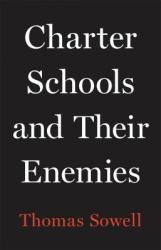
Charter Schools and Their Enemies eloquently lays out statistics that show the difference between charter and public schools.
It talks about the reasons why charter schools produce better school-wide academic success based on statistics. It also covers the many pieces of sweeping legislation that have been introduced to prohibit charter schools from being implemented in different states.
Moreover, it explores the future of the educational system with charter schools competing for students with public schools.
Overall, this book was very insightful and compelling about how the education system is expanding, so that parents can have more options about how they choose to educate their children.
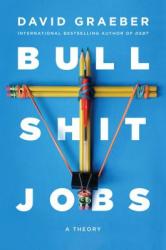
Every so often, I read a non-fiction book so eye opening that it continues to stay with me long after reading it. These are the books that point a light at something so obvious that I have to wonder why I didn't see it that way before. And perhaps these are the best non-fiction books because they can pull an entrenched mind out of the status quo to look at the system surrounding it with an entirely new perspective. Bullshit Jobs is one of these books for me.
I've been fortunate to have worked at a job that I like for about 15 years now. But even within these comfortable confines, I see much of what Graeber talks about when he refers to these so-called bullshit jobs. It's present in the bureaucracy, the middle managers, and the micro managers. That almost all jobs today have some element of BS in them shows how pervasive it is in society. Learning the reasons these jobs still exist despite decades of technological efficiencies and improvements is mind-numbingly simple—and equally frustrating.
However, being educated is only half the battle against these kinds of jobs. Actionable plans to get rid of these jobs were scarce in this book. And while I appreciated (and stand by) his intended solution, a few other options that could be enacted in the near term would have been nice. After all, this glut of bullshit jobs keeps unemployment low while also depriving people of the freedom to pursue more fulfilling—albeit not as well paying—creative endeavors. As it stands right now, this book is good at making us aware of the problem, but not necessarily being able to pull ourselves out of it.
An eye-opening book with few solutions, I give Bullshit Jobs 4.0 stars out of 5.
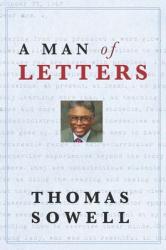
Thomas Sowell, one of the most prominent American economists, opens readers to a whole new side of his life through the letters he wrote to people throughout the 1960-2000s.
The book is comprised of letters which were written by him through the rise of the civil rights movement, to the debate on the effects of minimum wage.
The candid notes in this book reveal the thoughts and beliefs of a controversial but compelling figure in American economics and politics. It was inspiring to watch American history unfold through the eyes of a distinguished American leader. A Man of Letters inspires readers to spark change and never forget America's founding principles.
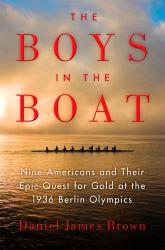
If you love books about the true American spirit, you must read Daniel James Brown's narrative-nonfiction book The Boys in the Boat. The book follows the life of Joe Rantz who was abandoned by his family during The Great Depression. It follows his journey as a teen going to the University of Washington and becoming a member of the 1936 Olympic rowing crew that won the gold medal for America. They were boys from working-class backgrounds who beat the odds and beat the very elite team of Adolf Hitler. The book is immersed in intriguing details of Joe’s life. This can be attributed to the fact that Brown was able to interview Joe in his frail, elderly years. He spent many hours listening to Joe’s daughter tell stories of her father’s experiences. Brown was also able to acquire diaries and photos from the boys on the rowing crew. Joe Rantz was very hard-working and optimistic. My favorite quote showing his optimism was: “The only time you don't find a four-leaf clover is when you stop looking for one.” The book is an irresistible account of teamwork, overcoming pain, trusting in others, endurance, and driving spirit. I chose this book because I like other books that this Author made. What I enjoyed about this book the most is how inspirational it is to the readers. It shows you can accomplish what you set out to do if you work hard at it. There isn’t a part of the book I enjoyed the least. I can relate to Joe Rantz because I work hard to achieve my goals just like he did. This is a good book and I recommend a readthrough.
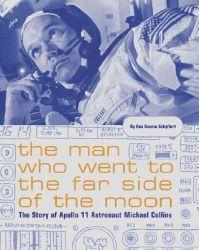
“The Man Who Went to the Far Side of the Moon” is one of the most interesting books ever written! Bea Uusma Schyffert’s unique scrapbook style presents the story of Michael Collins, the Apollo 11 astronaut who faithfully piloted the spacecraft as his two teammates became the first men on the moon. Perfectly capturing every thought and detail through pictures, infographics, and prose, “The Man Who Went to the Far Side of the Moon” pulls the reader into the story and lets them see it through Collins’ eyes. It even includes notes written by Collins himself. This is by far the best account of the forgotten hero in the history of astronomy.
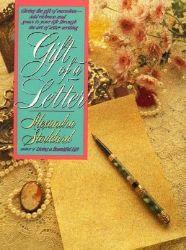
Looking to get into letter writing? Alexandra Stoddard’s introductory book “Gift of a Letter” explains all the ins and outs of what it takes to write a letter. A sincere tribute to the etiquette of pure expression, “Gift of a Letter” contains two books in one. It is both a biography and an instruction manual working for the same purpose: to uncover and share the lost art of letter writing. Though appearing somewhat dry and monotonous, this book delivers a eye-opening (and envelope-opening) message: writing is from the heart.
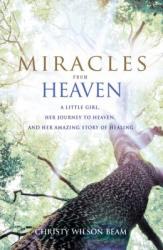
Miracles from Heaven is a deeply moving recount of Annabel Beam's healing from pseudo-obstruction mobility disorder and antral hypo motility disorder. This diagnosis is an obstruction of the GI system, which makes it impossible for food and fluid to move through the stomach and intestines.
After being diagnosed at six years old, she began a variety of different medications which left her with little energy and no quality of life. Annabel loved climbing trees, but she was unaware that one of them would cause a miracle that changed her entire life.
This book was highly intriguing because near-death experiences (NDEs) have always fascinated me. This book lifted my spirit and encouraged me to always have hope in every situation.
“The Zoo on the Mountain” is an inspiring historical tale of The Cheyenne Mountain Zoo. This book follows the famous Coloradoan zoo and its owners through the highs and lows of its existence. Starting with Spencer Penrose’s first bear and carrying through the disastrous flood from the mountain above, the impeccably accurate accounts of this book portray the humble mountain zoo in its true light. “The Zoo on the Mountain” is a interesting and mentally moving piece of literature. It’s a zooful of knowledge!
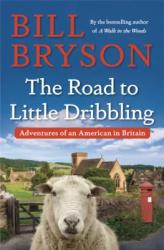
keep forgetting that Bill Bryson’s books are hit-or-miss for me. I’ll read one and think it’s great, then proceed to another and find myself disappointed. Perhaps I’ve already read the good books from his bibliography and now all I’m left with are the ones that aren’t. I’ll usually forget that I’ve been disappointed after a few months or years of not reading Bryson, which inevitably leads me to remembering his good books and giving it another shot. The Road to Little Dribbling is another book I’d put on the “bad” pile.
While I never read the book that preceded this one, I didn’t need any context to determine The Road to Little Dribbling’s major flaw. As a Millennial, I am often annoyed by Boomer-age people who bemoan that things “used to be better.” They’ll moan about prices being lower, quality being better, and everyone living happily together in blissful togetherness. Those sentiments are the entire basis of this book. Maybe it’s supposed to be read as humor, but most of this book felt like the spiteful mutterings of a grumpy old man.
The issue with memoirs is that the main character is usually the author. In this book, the main character is not likable by any means. He talks down to everyone and paints them as idiots. The few slightly amusing bits were only when he proved to be the fool in a scenario that had gotten him hot and bothered. Listening to this audiobook in the car, it felt like I was driving around with someone who I would not have given a ride to in the first place. None of the positives of his journey stuck out to me because every other commentary provided was full of sour gripes.
A memoir full of whiny complaints about how the past was better, I give The Road to Little Dribbling 2.0 stars out of 5.
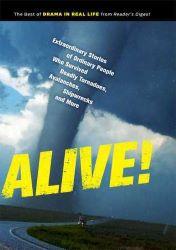
“Alive” is a heart-pumping, edge-of-your-seat thrill ride from beginning to end! Dozens of harrowing true stories from ordinary people who have have stared death in the eye and lived have been compiled into one book for the ultimate tale of survival. Whether it’s a devastating tornado, a collapsing ice cave or a bloodthirsty shark, “Alive!” has nothing but nonstop adventures from cover to cover. “Alive!” is a must-read for thrill-seekers everywhere. Kids, don’t try this at home!
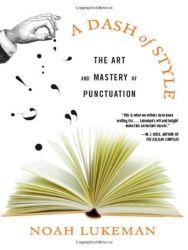
"A Dash of Style: The Art and Mastery of Punctuation” truly sheds a new light on the mysterious world of punctuation. In his book, Lukeman examines each and every one of the illustrious yet overlooked punctuation marks in the English language. After discussing each mark’s unique qualities and the ways in which to employ them, he turns to the reader and provides simple yet effective exercises to give the them a grasp on the teachings of the chapter. He also uses incredible insight to determine the type of writer that over- and under- uses each type of punctuation mark, and imprints on the reader a better understanding of what punctuation does to a piece of writing. This book is a crucial piece of literature for writers and non-writers alike. “A Dash of Style: The Art and Mastery of Punctuation” definitely leaves a mark on its readers!
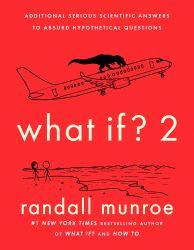
“What If? 2” is a must-have for both information and entertainment! Randall Munroe takes the wildest want-to-know questions from curious minds and presents them with serious — yet hilarious — scientific answers. From filling the solar system with soup to creating raging candy storms, Munroe comically lays out the effects of each silly scenario. Curious minds will devour this book full of the perfect balance of fact and fiction. “What If? 2” finds a whole new purpose for the world of science!
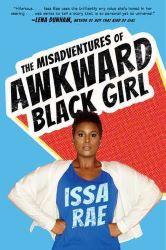
This book follows Issa Rae, a half-Senegalese actress and producer (she was the president in Barbie and also stars in Insecure!). The book follows Issa as she tries to find herself throughout her life because she has always felt awkward and how she has come to terms with herself. This book is extremely funny. While most of the book has humorous undertones, there are sections that are quite serious. Issa Rae writes about her life in an upwardly mobile immigrant family & her painful attempts to be cool. You don't have to be awkward or black to enjoy this book.
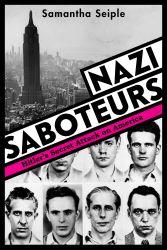
Nazi Saboteurs is a book about this group of boys who try to stop the evil of the nazis. Through this novel they face many difficult situations that they overcome with the support of others. The book includes pictures that assist the reader to grasp a better understanding of the text. Nazi Saboteurs was released in December of 2019 and has two hundred twenty-four pages that tell of hardships, action, and suspense. It is important to not forget the past, even if it was not ethical. This story shows the light in the darkest times. I hope you enjoy reading it as much as I did.
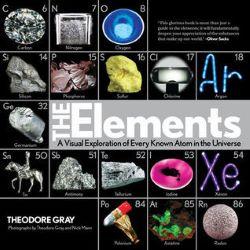
I truly have nothing bad to say about Theodore Gray’s book, The Elements. It is is both informational and entertaining, making it a super engaging read. It is chock full of facts about the periodic table and every element in it. Gray combines firsthand experience, intelligence and insight with wit and dry humor to make his element explanation stand out in the world of nonfiction. Along with the superior style in which is written, The Elements also uses stunning photographs of the author’s actual collection of items representing the periodic table’s vast content. In short, The Elements is an absolutely astonishing piece of work. Putting it down is impossible!
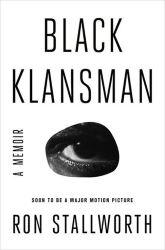
Who knew history could be so ironic? It’s 1978, and the Ku Klux Klan is on the rise in the community of Colorado Springs. Ron Stallsworth, the first African-American detective in the Colorado Springs Police Department, launches an undercover investigation with the mission to thwart the Ku Klux Klan’s infiltration into Colorado Springs. Ron Stallsworth can only communicate via the telephone, so he recruits the “white” Ron Stallsworth, Chuck, to conduct all face-to-face meetings. This creates the perfect breeding ground for irony, insanity, and idiocy.
Out of the pure insanity of the circumstances and the idiocy of the Colorado Ku Klux Klan, this book had me uncontrollably laughing. While the writing style leaves much to be desired, the narrative more than bridges the gap. The BlackKlansmen is a wonderful memoir about standing up to terrorism and hate.
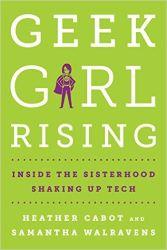
'Geek Girl Rising: Inside the Sisterhood Shaking Up Tech' is a nonfiction book focusing on the women who have taken their place in the tech industry, placing special focus on the women who help empower other women. Each woman is given a snapshot of her successes and story.
The highlight of this books is learning about these impressive women. I can imagine this would be especially empowering for girls who are looking to get into this industry. Over one hundred women are mentioned, and a list of them are included at the end of the book for reference. Furthermore, with this book at the ready, it would be impossible to claim that there aren't sucessful women in tech.
The writing style is quick and snappy, not lingering on any point for too long. It focuses on telling as many stories as possible. However, none of the stories feel empty. Lots of information is fit into small spaces.
My only complaint is that I wished the book had gone more into detail about the challenges women in the industry face. There were brief mentions of sexism in the workplace, but it wasn't discussed much. Though I understand that the point of the book is to inspire, I would have liked a better understanding of why empowerment is so needed in the tech world.
Overall, I would recommend this book to anyone interested in the tech industry or feminism. I would especially recommend it to anyone looking for female role models.
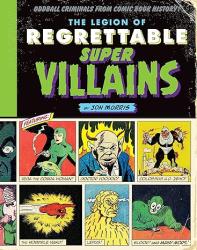
With the success of comic book movies in the last decade, it's sometimes hard to forget that these films don't explore all of what the pulpy medium offered. The rise in popularity of comics in a few different "eras" inevitably led to saturation in the medium. When something becomes saturated, creators don't care as much about what they're putting out, since everything sells. This is how a book like The Legion of Regrettable Supervillains can collect quite a few foes that were better left forgotten.
If there's anything this book does well, it's showing how simple and bland the early years of comics were. Perhaps I'm just used to the modern era that's had decades to figure out which superheroes and supervillains work best. Many of the early comic villains are forgettable, indicating a lack of imagination on the part of their creators. Unfortunately, since this book collects a lot of these villains in one place, it is boring to get through. After a few pages of supervillain puns, I got the "joke" this book was trying to make. And it just kept going.
While I understand organizing this book chronologically showed how these regrettable supervillains evolved over the years, I think it might have had more variety if it just stuck to being exclusively alphabetical. After all, it would have kept my attention a little better if I learned about a villain like Lepus before being reminded that M.O.D.O.K. exists. Perhaps my surface-level interest in comic books (especially the classics) is why it took me a while to get through this book. Still, if you want to be a super-fan of this medium, you might already know about Doctor Voodoo, which might make this humorous commentary on him a moot point.
A slightly amusing gimmick that highlights the lack of early comic book creativity, I give The Legion of Regrettable Supervillains 3.0 stars out of 5.


